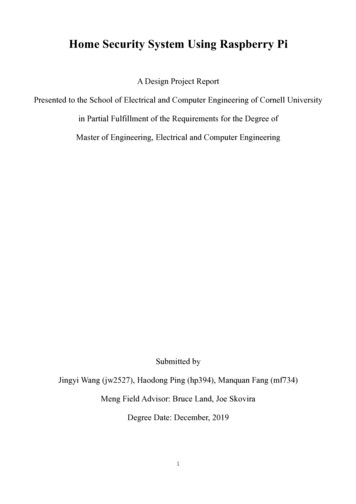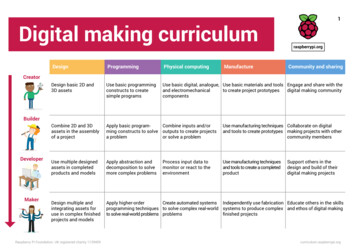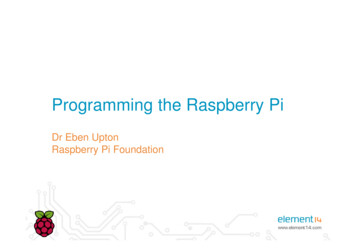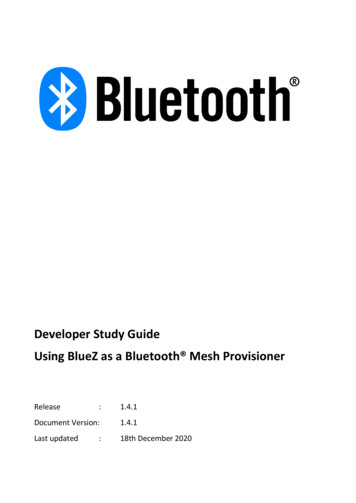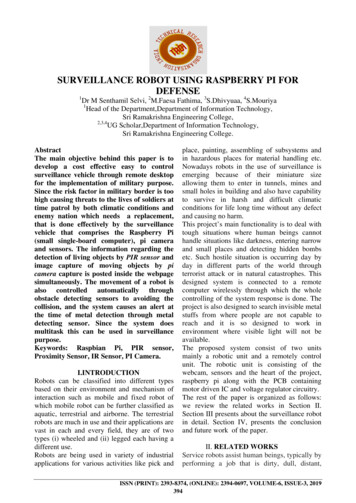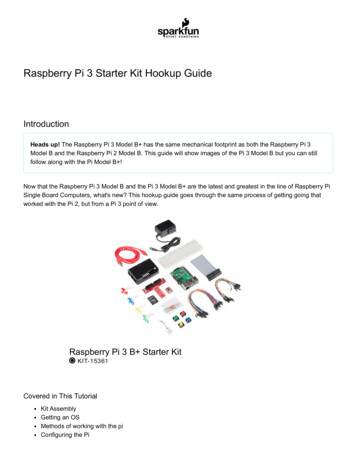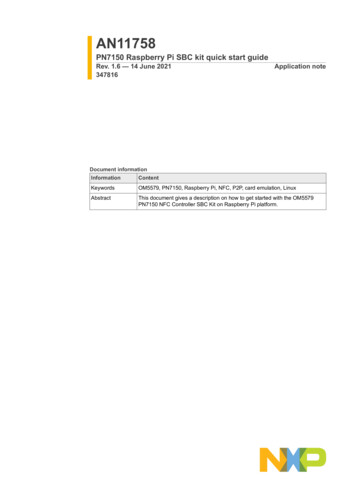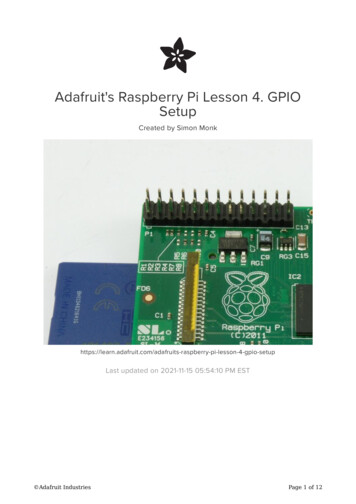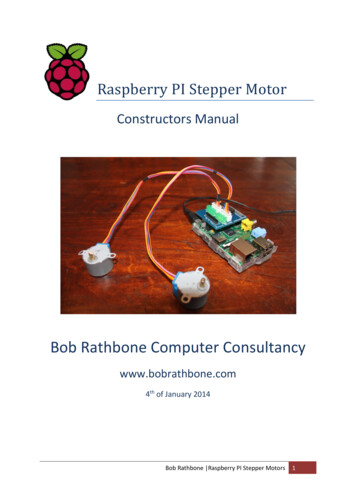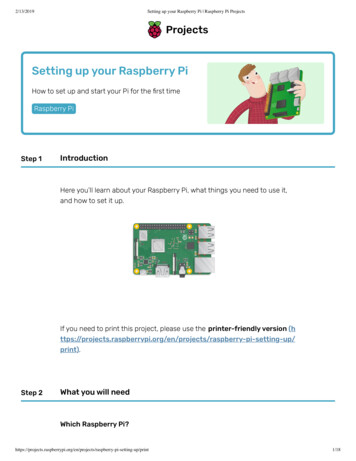
Transcription
Raspberry Pi Architectureby Ryan Trumpore and Erika Zuniga
Agenda History of the Raspberry PiHardwareARM ProcessorProgrammingApplicationsRaspberry Pi vs BeagleBone
History of the Raspberry Pi The purpose of creating these affordable, programmable computers was topromote basic computer science to be taught in schools. Created by the Raspberry Pi Foundation (UK) Sold over two million units within two years of having licensedmanufacture deals with element 14/Premier Farnell and RS Electronics.
Why you should use one Low cost and low power Simple to use Educational device for youths and hobbyists to learnabout programming Versatile for many different projects/applications Compact Size Immense amount of resources for different projects
Hardware 4 Models: A, A , B, B 85.6mm x 56mm x 21mmo The size of your student ID ARM1176JZF-S Processoro Typical clock size is 700 MHz, preforming at approximately 40MFLOPS Can be overclocked to 1GHz without any issues Includes VideoCore IV graphics processor w/ 1 billion pixels per second 512 MB of RAM is built into the board, not replaceable or upgradeable Includes multiple built on I/O portso 100 MB/s Ethernet porto HDMI port and RCA porto Audio Jack
RISC Architecture Low Transistor Count Low Power Consumption/Heat Production Used in most mobile deviceso Phoneso Laptopso Small Digital Devices Raspberry Pi has similar requirements tomobile devices Architecture allows for various Unix OSso Raspberry Pi can utilizes nearly allLinux distros
Instruction Set 3 Instruction Setso 32 Bit ARM Single Instructions Handles Data Organizes Processor Segmentso 16 Bit Thumb Specialize in branch range and address space Used with ARM for rapid interrupts Used for Digital Signal Processingo 8 Bit Java Jazelle Technology Deals with complex Java bytecodes
Major Processor Segments Integer Core processes integer valueso 40 total 32-bit registerso Three Pipelines ALU, MAC, and Load/Storeo ALU handles all arithmetic, logic,shift, and saturation operationso MAC handles all Multiply operations 32x16 multiplier Accumulator
Major Processor Segments Load/Store Unit handles all load and store operations sent from theInteger Core, and decouples these instructions from the MAC and ALUpipelines Prefetch Unit handles all instruction callso Utilizes both types of branch predictiono Combined with the Branch TargetAddress Cache (BTAC) results in nearlyzerowasted cycles (Dynamic)o Also handles branches not in BTACwith normal branch predictor (Static)
Major Processor Segments Memory Management Unit organizes all memory calls, in order to makethem more efficient, lowering system delays Vector Floating Point Coprocessor (VFPC)o Core of process is integero Floating Point Operations done here Single and Double Precision Eight single or four double elems Vector Interrupt Control (VIC) Interfaceo Handles all interruptso Deals mainly with external systemso Request Signal allows faster interrupt
Pipelining 8 stage pipeline Datapath consists of three pipelines: ALU, shift, or Sat pipeline MAC pipeline Load or store pipeline Fetch stages can hold up to four instructions. Branch predictionperformed on instructions ahead of execution of earlier instructions Issue and Decode stages can contain any instruction in parallel with apredicted branch Execute, Memory, and Write stages can contain a predicted branch, anALU, or multiply instruction load/store multiple instruction, and acoprocessor instruction in parallel execution.
Pipeline Stages
Programming on a Pi Raspberry Pi supports multiple Linux distributionso Ubuntuo Openeleco OSMC The installed ARMv6 also handle many languageso Pythono Co C o Javao Rubyo Scratch More programming languages can be installed with proper support tools
Applications While originally used to teach kids about programming, the Raspberry Pihas evolved to be used for a multitude of different applicationso Automated Light Control Systemo Game System Emulatoro Surveillance Systemo Universal Remote Control systemo Automated House systemo Music Streaming Speakers
Surveillance Camera
Game Emulator
Remote Control Car
Raspberry Pi vs BeagleBoneRaspberry PiBeagleBone BlackCost 35 45I/O Pins8 Pins65 PinsPower Draw260-350 mA210-460 mAProcessor Speed700 - 1000 MHz1000 MHzRAM512 MB512 MBVideo OutputsHDMI, CompositeMicro-HDMIAudio OutputsStereo over HDMI,3.5mmStereo over HDMIOnboard MemorySD Card2 GB On-board, MicroSD
Sources http://www.raspberrypi.org (RasperryPi’s main website) di0301h/DDI0301Harm1176jzfs r0p7 trm.pdf (ARM1176JZF-S Technical ReferenceManual) ht-platformraspberry-pi-or-beaglebone-black/
History of the Raspberry Pi The purpose of creating these affordable, programmable computers was to promote basic computer science to be taught in schools. Created by the Raspberry Pi Foundation (UK) Sold over two million units within two years of having licensed manufacture deals with element 14/Premier Farnell and RS Electronics.
